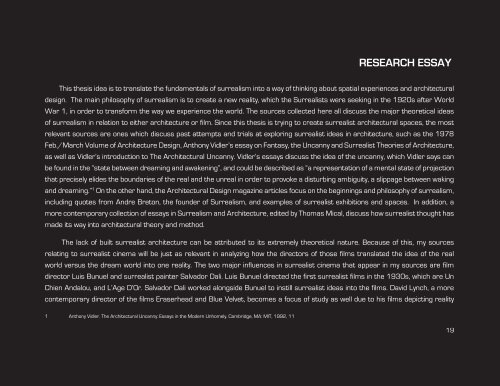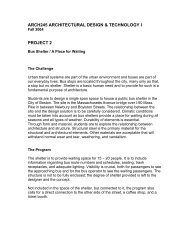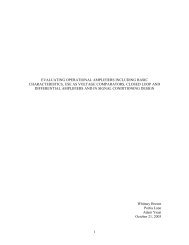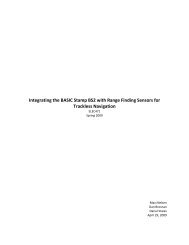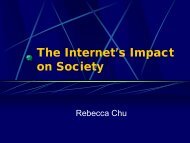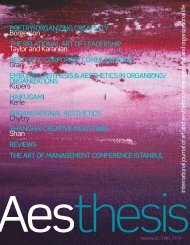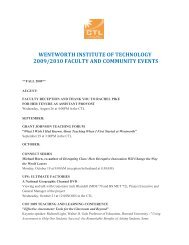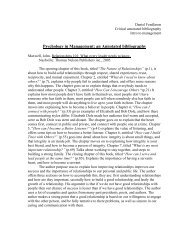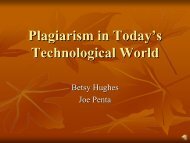Thesis Book - MyWeb at WIT
Thesis Book - MyWeb at WIT
Thesis Book - MyWeb at WIT
Create successful ePaper yourself
Turn your PDF publications into a flip-book with our unique Google optimized e-Paper software.
RESEARCH ESSAY<br />
This thesis idea is to transl<strong>at</strong>e the fundamentals of surrealism into a way of thinking about sp<strong>at</strong>ial experiences and architectural<br />
design. The main philosophy of surrealism is to cre<strong>at</strong>e a new reality, which the Surrealists were seeking in the 1920s after World<br />
War 1, in order to transform the way we experience the world. The sources collected here all discuss the major theoretical ideas<br />
of surrealism in rel<strong>at</strong>ion to either architecture or film. Since this thesis is trying to cre<strong>at</strong>e surrealist architectural spaces, the most<br />
relevant sources are ones which discuss past <strong>at</strong>tempts and trials <strong>at</strong> exploring surrealist ideas in architecture, such as the 1978<br />
Feb./March Volume of Architecture Design, Anthony Vidler’s essay on Fantasy, the Uncanny and Surrealist Theories of Architecture,<br />
as well as Vidler’s introduction to The Architectural Uncanny. Vidler’s essays discuss the idea of the uncanny, which Vidler says can<br />
be found in the “st<strong>at</strong>e between dreaming and awakening”, and could be described as “a represent<strong>at</strong>ion of a mental st<strong>at</strong>e of projection<br />
th<strong>at</strong> precisely elides the boundaries of the real and the unreal in order to provoke a disturbing ambiguity, a slippage between waking<br />
and dreaming.” 1 On the other hand, the Architectural Design magazine articles focus on the beginnings and philosophy of surrealism,<br />
including quotes from Andre Breton, the founder of Surrealism, and examples of surrealist exhibitions and spaces. In addition, a<br />
more contemporary collection of essays in Surrealism and Architecture, edited by Thomas Mical, discuss how surrealist thought has<br />
made its way into architectural theory and method.<br />
The lack of built surrealist architecture can be <strong>at</strong>tributed to its extremely theoretical n<strong>at</strong>ure. Because of this, my sources<br />
rel<strong>at</strong>ing to surrealist cinema will be just as relevant in analyzing how the directors of those films transl<strong>at</strong>ed the idea of the real<br />
world versus the dream world into one reality. The two major influences in surrealist cinema th<strong>at</strong> appear in my sources are film<br />
director Luis Bunuel and surrealist painter Salvador Dali. Luis Bunuel directed the first surrealist films in the 1930s, which are Un<br />
Chien Andalou, and L’Age D’Or. Salvador Dali worked alongside Bunuel to instill surrealist ideas into the films. David Lynch, a more<br />
contemporary director of the films Eraserhead and Blue Velvet, becomes a focus of study as well due to his films depicting reality<br />
1 Anthony Vidler. The Architectural Uncanny: Essays in the Modern Unhomely. Cambridge, MA: MIT, 1992, 11<br />
19


